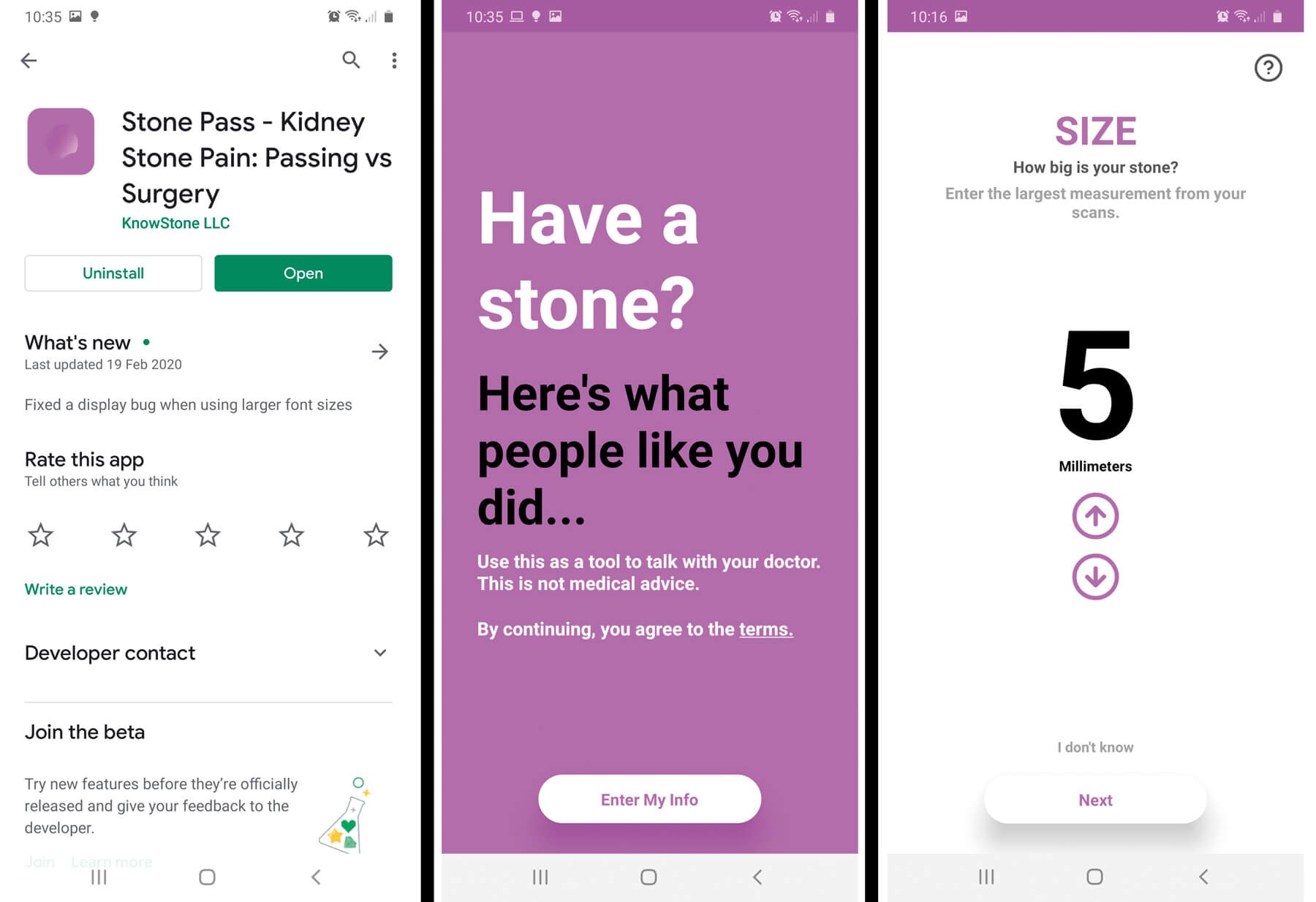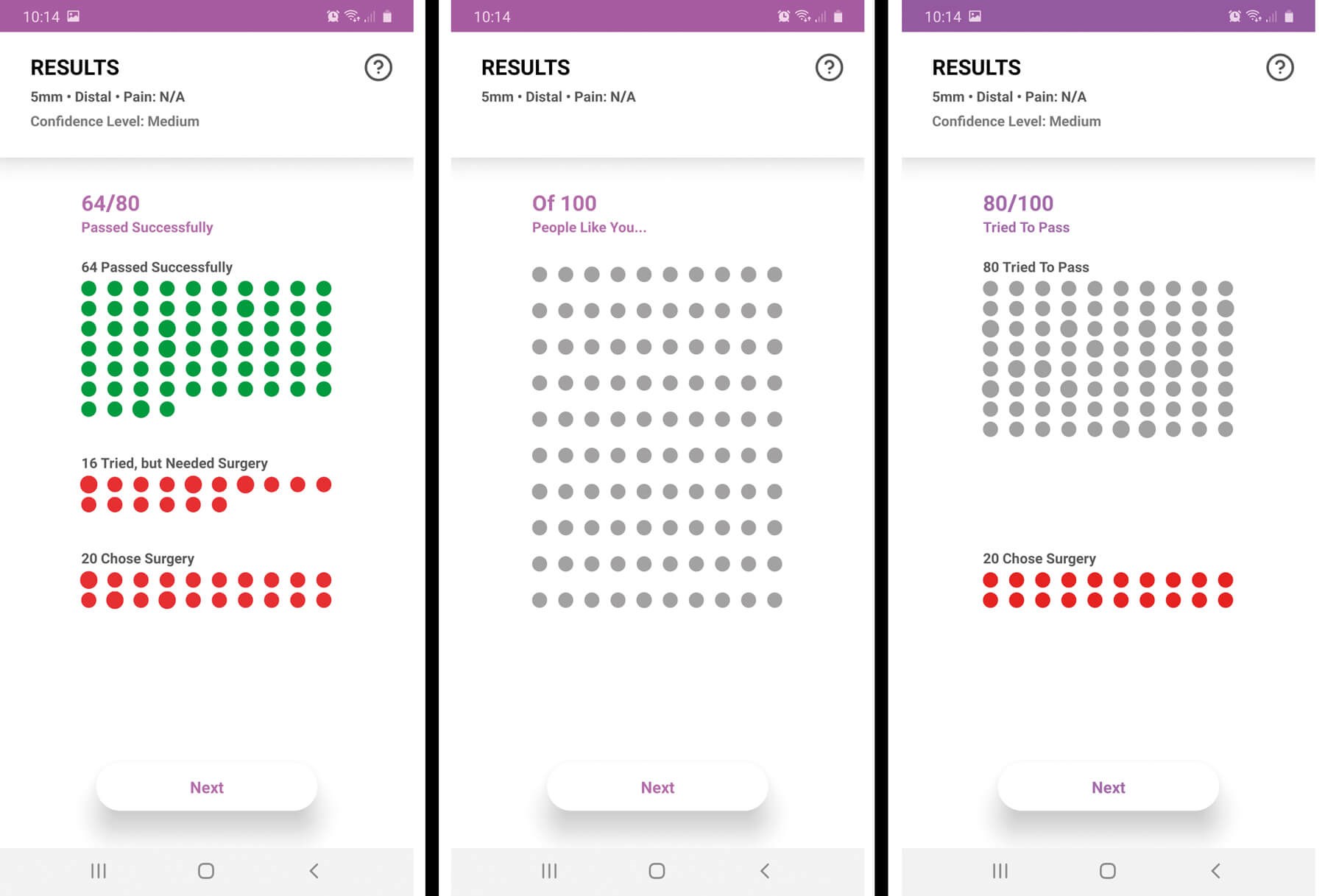
For this Digital Review I have focused on the Stone Pass: Kidney Stones app (Know Stone LLC) – a new information tool for patients with ureteric stones. I had recently seen a shared tweet originating from the app’s author Dr Andrew Portis, a Urologist from Minnesota (US) with a specialist interest in stone disease. The app is available for purchase from both the App Store (apple/OS X) and Google Play (Android), and available for free on both stores.
The App Store information suggests its target market is acute stone sufferers rather than medical professionals / urologists. It clearly states that it does not contain medical advice, rather is designed for community education and an aide for decision making with ‘your doctor’.
The app uses the stone size and position along with the time point pain scores to demonstrate the outcomes of patients in an equivalent scenario. The data entry is very easy to use, with a good quality user interface. The output display is very clear with a 100-point colour variable plot to demonstrate patient / percentages of those attempting to pass their stone and those needing surgery. An extra information section has some useful information for patients regarding position and size of stones and a brief natural history of stone formation. This information section also references source data (1600 patient outcomes), lists three stone guidelines (National Institute for Health & Care Excellence / American Urological Association / European Association of Urology) and six background publications.


Having used the app with several patients to this point, the information generated seems very reasonable and would fit roughly into the outcomes seen from recent large-scale contemporary publications [1]. There may be a slight surgical bias, but this may represent cultural and health service differences between the UK and US. My initial thoughts regarding the pain score output was one of indifference as I’m not certain patients like to be told how many people have worse pain than them. Two patients have commented that it helped them support their decision to pursue a conservative course of management with their stone disease.
On the results output screen there is ‘confidence level’ stated (low / medium / high) although it is not clear what this is in reference to, or how much a lack of confidence may influence outcomes. My other criticism is of the pain score output. It states a pain score value, but it is not clear to the patient what the range or meaning of this is, and appears to only be categorised into low and high. With some further reading around PROMIS pain scoring (Pain Intensity Scale 3a v1.0) this can be found [2], but I would not expect the majority of patients to find and understand this information. The graphical output of pain score also compares the patient to all patients with a stone rather than those with a similar size stone, which adds further complexity.
Overall, I think it is a nice app to use and I have continued to use it to aid the decision-making process with patients presenting with acute ureteric colic. With multiple uses, I have found the explanation of the output to be easier and subsequently more useful for patients. Given that it is now free I am happy to recommend it to patients and urologists alike. Additional elements could be incorporated (dietary advice and fluid alerts for example) which would make it a must have app. Currently I see its place on the smart device of a urologist (or well informed patient) to further enhance discussions regarding stone treatment options.
Links
Google Play (Android)
https://play.google.com/store/apps/details?
id=me.perkhealth.knowstone&hl=en_GB
App Store (Apple/OSX)
https://apps.apple.com/gb/app/stone
-pass-kidney-stones/id1491822657
References
1. Shah TT, Gao C, Peters M, et al. Factors associated with spontaneous stone passage in a contemporary cohort of patients presenting with acute ureteric colic: results from the Multi-centre cohort study evaluating the role of Inflammatory Markers In patients presenting with acute ureteric Colic (MIMIC) study. BJU Int 2019;124(3):504-13.
2. www.practicalpainmanagement.com/resources/
clinical-practice-guidelines/promis-pain-related
-measures-overview





